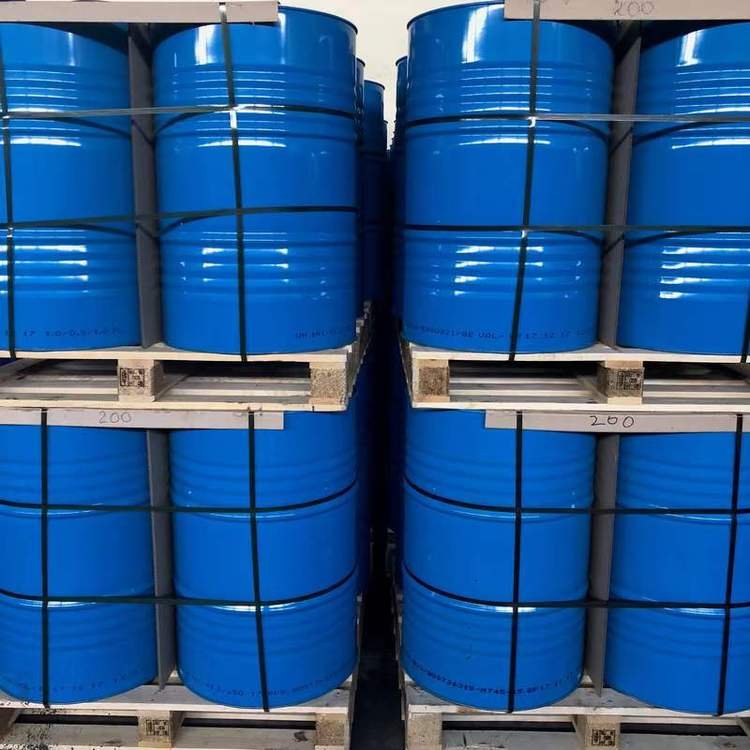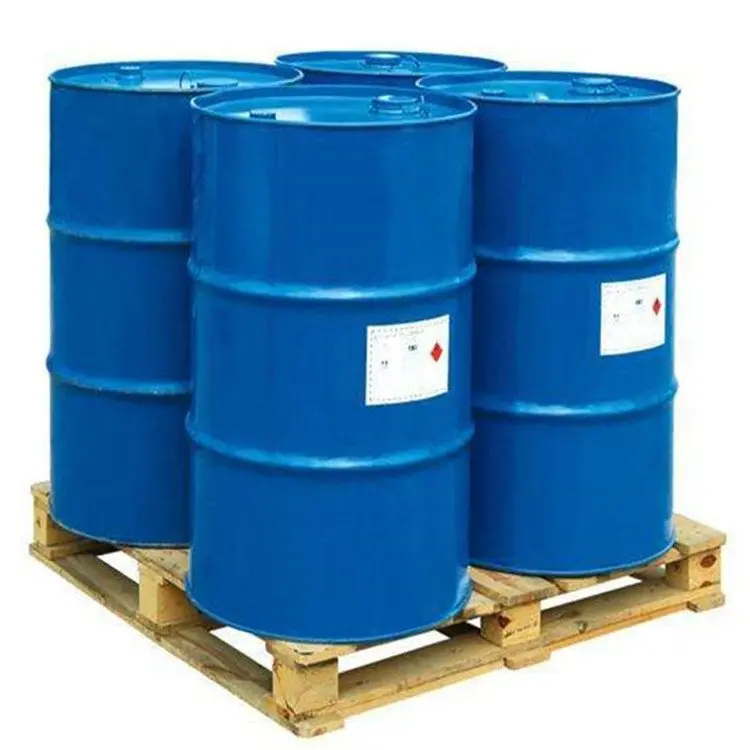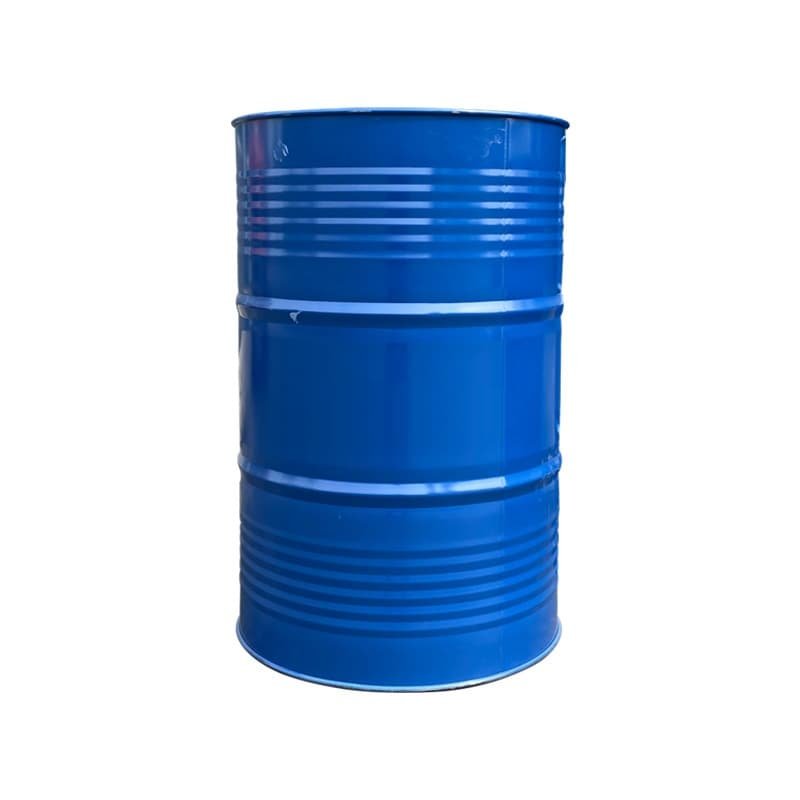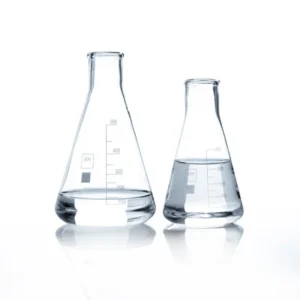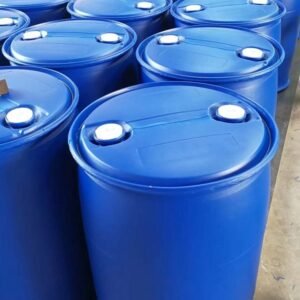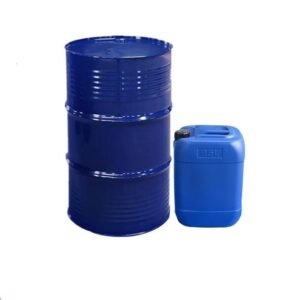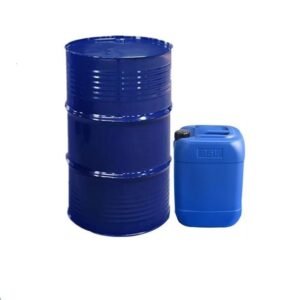Triethanolamine, also known as tri (2-hydroxyethyl) amine, is an organic compound that can be regarded as a trihydroxy substitute of triethylamine, with the chemical formula C6H15NO3. Similar to other amine compounds, due to the presence of lone pair electrons on nitrogen atoms, triethanolamine has weak alkalinity and can react with inorganic or organic acids to form salts.
Characteristics: Colorless * light yellow transparent viscous liquid with a slight ammonia odor, becoming a colorless * light yellow cubic crystal system at low temperatures. The color gradually darkens when exposed to the air. Easily soluble in water, ethanol, acetone, glycerol, and ethylene glycol, slightly soluble in benzene, ether, and carbon tetrachloride, almost insoluble in non volatile solvents. The solubility at 5 ℃ is 4.2% for benzene, 1.6% for ether, 0.4% for carbon tetrachloride, and less than 0.1% for n-heptane. It is strongly alkaline, and the pH of the 0.1mol/L aqueous solution is 10.5. Irritating. Has hygroscopicity. Can absorb acidic gases such as carbon dioxide and hydrogen sulfide. Pure triethanolamine has no effect on materials such as steel, iron, and nickel, but has significant corrosion on copper, aluminum, and their alloys. Unlike monoethanolamine and diethanolamine, triethanolamine and iodohydrogen acid (HI) can form iodohydrogen salt precipitates. Flammable. Low toxicity. Avoid contact with oxidants and acids.
Application
- Used as an emulsifier, moisturizer, humidifier, thickener, and pH balancing agent in cosmetics (including skin washing, eye gel, moisturizing, shampoo, etc.). In cosmetic formulas, it is used to neutralize fatty acids into soap and sulfated fatty acids into amine salts. Triethanolamine is a commonly used emulsifier in cream formulations. Cream products emulsified with triethanolamine have the characteristics of a delicate and bright paste. In addition, the colloidal phase formed by triethanolamine with higher fatty acids or higher fatty alcohols is stable, and the product quality is stable, allowing for high specific weight of added components. Triethanolamine is a common neutralizer containing acidic polymer gel such as carbomer. Triethanolamine forms a stable polymer structure by neutralizing the carboxyl group of carbomer to achieve the application effect of thickening and moisturizing.
- Adding triethanolamine to liquid detergents can improve the removal of oily dirt, especially non oily sebum. At the same time, by increasing alkalinity, the cleaning performance can be improved. And it has good compatibility.
- Used as a curing agent for epoxy resin, with a reference dosage of 12-15 parts (mass fraction) and curing conditions of 80 ℃/4 h or 120 ℃/2 h. It can also be used as a vulcanization activator for natural rubber and synthetic rubber, a polymerization activator for nitrile rubber, and as a lubricant and anti-corrosion additive. The long-chain fatty acid salts of triethanolamine are almost neutral and can be used as emulsifiers for oils and waxes.
- Used as a complexing reagent for aluminum ions in solution, this reaction is usually used to “mask” specific ions in the solution (not to participate in titration) before complexing with another chelate (such as EDTA, which can form stable complexes with most metal ions).
- Triethanolamine and its salt solution, as engineering admixtures and early strength agents (0.1% of total mass) in the grinding process of cement clinker, can not only prevent the aggregation of powder particles and air cushion effect during the grinding process, improve the fluidity and filling density of cement, but also reduce the power consumption of the crusher. However, the extent to which heavy metals and radioactive isotopes in triethanolamine complexed cement matrix can increase their solubility remains an unresolved issue.
- The oleic acid triethanolamine grease produced by the reaction of triethanolamine and oleic acid under high-temperature catalyst conditions is an important preparation component for corrosion inhibitors in mechanical processing industries such as boiler water treatment, automotive engine coolant, drilling and cutting oil agents, protecting metal surfaces and preventing oxidation.
- Used as a stationary liquid for gas chromatography.
- Used as an efficient chelating agent for various heavy metals.
- In alkaline zincate zinc plating, it can chelate with zinc, improve the anionic effect of the plating solution, and make the coating crystallize finely. A high content will reduce the deposition rate, while a low content will make the coating gray and rough, with poor dispersibility, generally ranging from 20 to 30ml/L. However, the high viscosity of triethanolamine reduces the upper limit of current density in the plating solution.
- It is a good solvent and hygroscopic agent used in the textile industry. It is a raw material for fabric softeners.
- As an industrial gas purifier, it is used to remove acidic gases such as hydrogen sulfide and carbon dioxide in waste gas treatment.
- Other: Pharmaceutical excipients. Can be used as a solvent for casein, shellac, dyes, etc. It can also be used as a fiber treatment agent, anti-corrosion additive, plasticizer, photographic developer additive, engine carbon deposition prevention agent, etc. Used as an additive or anti-corrosion agent for plasticizers, neutralizers, lubricants, and dispersants for dyes, resins, etc. It can also be used as a synthetic surfactant and stabilizer.

